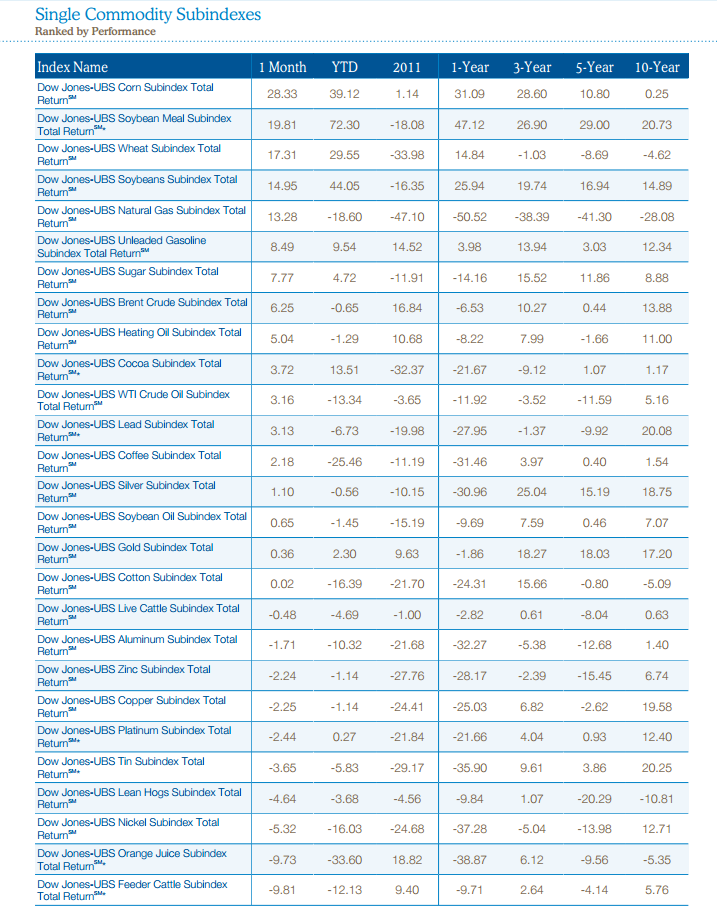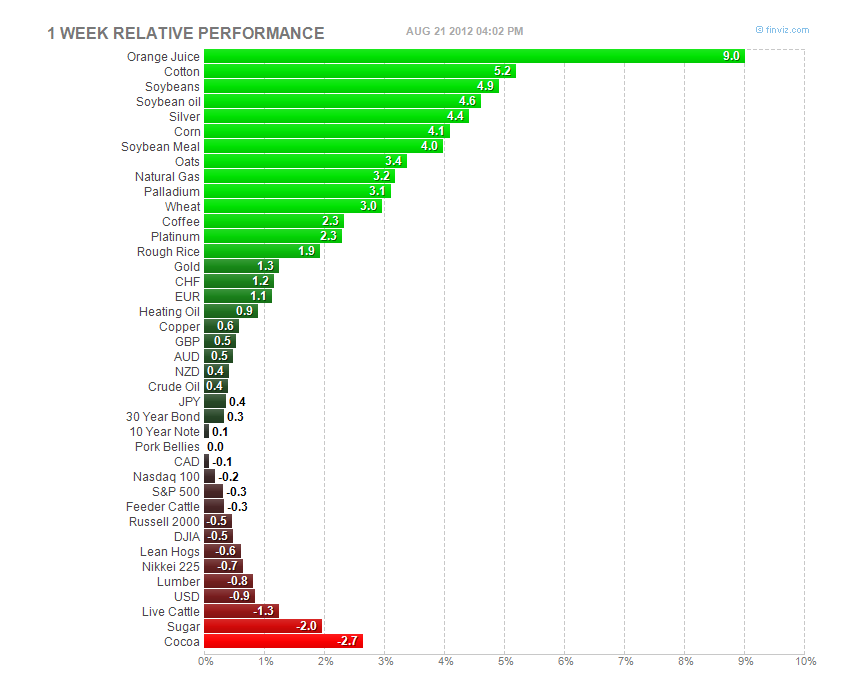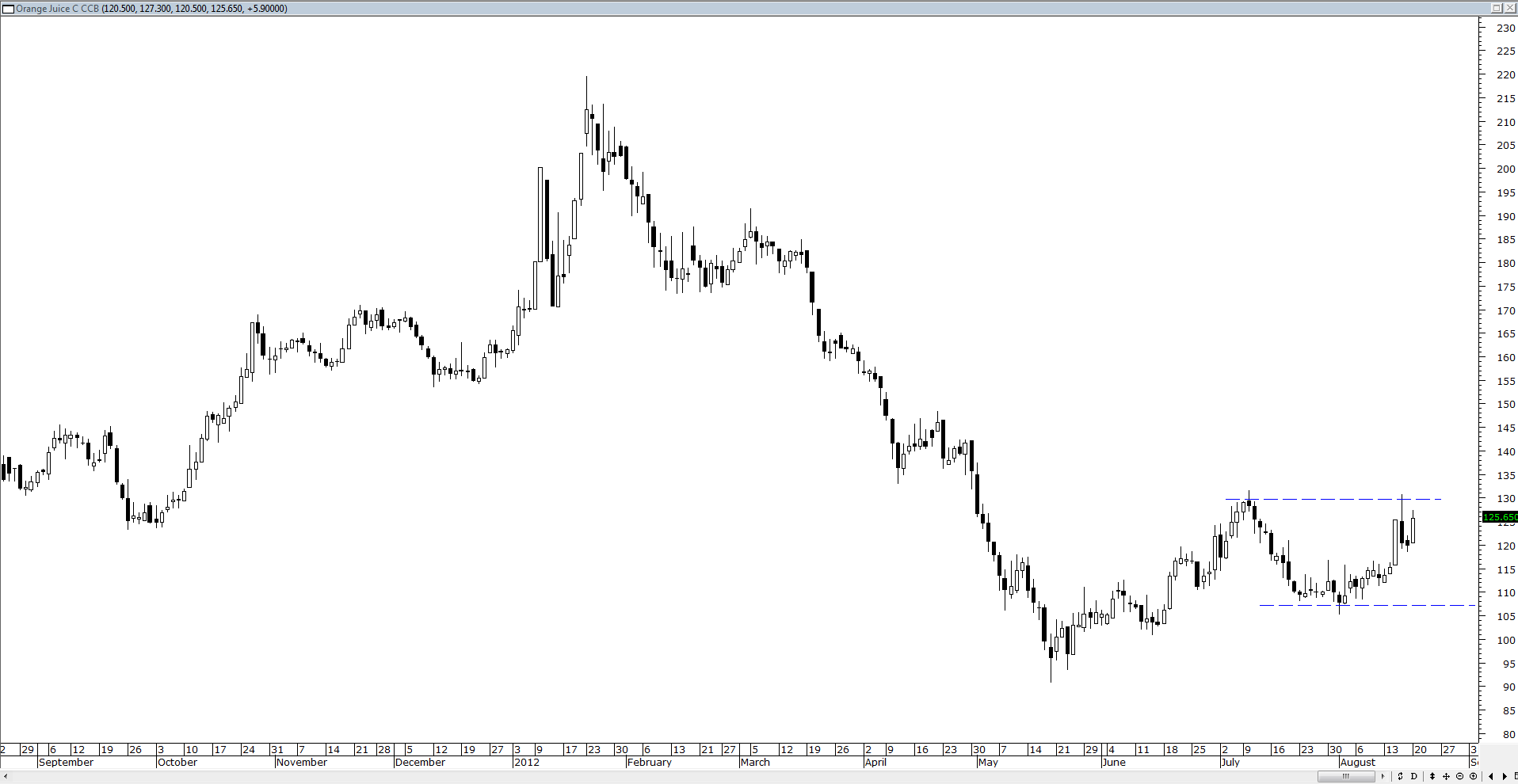Dow Jones-UBS Commodity Indexes
I regularly get a series of commodity index updates from Dow Jones – I originally started to get these when ETF trackers for commodities began to come online.
From my perspective the interesting thing is the notion of time frames that they apply – as you can see from the data below all indices have performance data going back 10 years. There is obviously a demand for this sort of data outside simply academic interest.

 From my old days in the industry I know that analysts use this sort of data in their pitches. The only problem is that it is totally irrelevant to a trader. In fact it is irrelevant to everyone since only the dim and the foolhardy would hold a given commodity/index for 10 years based upon historical returns.
From my old days in the industry I know that analysts use this sort of data in their pitches. The only problem is that it is totally irrelevant to a trader. In fact it is irrelevant to everyone since only the dim and the foolhardy would hold a given commodity/index for 10 years based upon historical returns.
Much more relevant to traders are what I would call breakout returns. This is data collected over a much shorter time frame and indicative of a breakout in price. For those without commodities data you can use a service such as Finviz where you can look at relative performance over a variety of time frames and correlate this to whatever your notion of a breakout is. However, there is an important caveat that we will see below
 From this example of performance ranking you can see that OJ has the highest relative performance over the past week. So we open up a chart of OJ to see the following.
From this example of performance ranking you can see that OJ has the highest relative performance over the past week. So we open up a chart of OJ to see the following.
OJ has been performing in a relative sense but when we actually look at price action it is still stuck in a band with upper price action struggling to make a new high at beyond 130. Relative performance is just that, it is relative to other instruments and not necessarily indicative of a price breakout.






